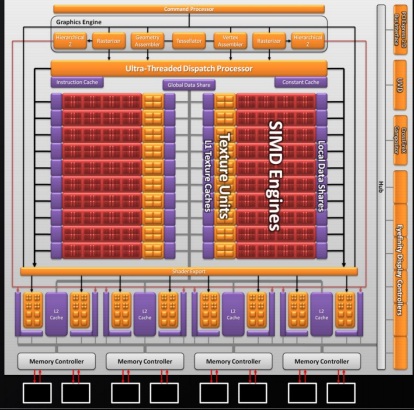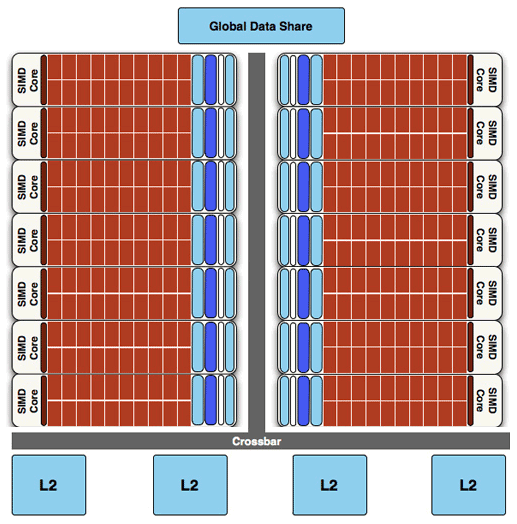[QUOTE="ronvalencia"]
Engaging Personal Debate Mode....
[QUOTE="Sekeru"]
Wowronvalenciathat took a while for you to reply.I thought you were done but apparently you just don't get it.Yeah i know all that about mobile GPUS and so you agree they are underclocked undervolted desktop parts.And just because they are both a tilling archecture GPU doesnt mean they will perform the same transistor to transistor.How the hell you can argue that is beyond my understanding.And the new PowerVR GPUs have spent all the transitors to puer performance according to their newest press release.And do you know that the PowerVR GPU is multicore possible right?And again transistors don't equal performance.Never has never will.And yeah they haven't had a good track record but thats because of Driver problems on the Desktop/notebook front.Bad drivers can make a good GPU look like a 5 year old one.And yes AMD is trying to bring something to market that seems nice but hell Intels Sandy Bridge looks more impressive and they are mainly a CPU company.So again i don't know what your arguing about at this point but your again stating your opinion as fact which is dumb.So can we please get back on subject?Somehow i don't think you will......
Sekeru
With GPUs, one can roughly guess performance based on transistor count e.g. ATI Radeon HD 4670's 514 million transistors gets beaten up by ATI Radeon HD 5870's 2150 million transistors i.e. more ALUs/FP units, more register datastorage, register instruction storage, more texture units, more ROPs, more cache/buffers/onchip and 'etc'.
PowerVR's multicore nature is not unique. i.e. ATI and NVIDIA GPUs are already "many-cores". It seems somebody needs computer science lesson 101.
Refer to http://en.wikipedia.org/wiki/CUDA
GPUs have a parallel "many-core" architecture, each core capable of running thousands of threads simultaneously - if an application is suited to this kind of an architecture, the GPU can offer large performance benefits. This approach of solving general purpose problems on GPUs is known as GPGPU.
Haven't you notice how ATI and NVIDIA scales their DX10.X GPUs from the low end to the top end? Btw. CUDA refers to NVIDIA Geforce 8 and above. ATI Stream is the alternative.
When handheld power envelope bias reduced, the best PowerVR IP based GPU is Intel GMA 500 (for netbook power envelope).
For netbook market, AMD Fusion Ontario murders Intel GMA 500(PowerVR) inperformance. AMD Fusion Ontario delivers entry level PC HD gaming experience. AMD Fusion Ontario is currently being sampled to ODM/OEMs. For Ontario's Aliens vs. Predator DirectX 11 (includes Tesselation hardware support) demo (in HD) refer tohttp://techreport.com/discussions.x/19017This is an actual livedemo not just some paper press release.
Lets see Intel Sandy Bridge beat that. i.e. showing a frame of Mass Effect 2 (basic render scene) and not disclosing the rendering resolution doesn't impress PC gamers.
AMD Fusion Ontario is what I define as close to the Xbox 360.Again, 3DS has to beat ATI Radeon HD 3300 IGP first before Xbox 360.
We are not even factoring AMD Fusion Llano for notebook power envelope i.e. 400 shader GPU. It makes any GPUs below ATI Radeon HD 5670 redundant.
You then have factor in ATI's next generation "Southern Islands" and "Northern Islands" GPU architectures.
Intel has a long history with 3D acceleration i.e. starting with Intel i860/i960(google it) i.e. 3D processors used in early 90s SGI workstations. I do hope you know the history of SGI. Intel tried re-enterdesktop GPU market with i740 and failed. Recently, they tried again with Intel Larrabee and failed i.e. on performance it's dead on arrival.
First of all your talking about a huge Transistor difference certaintly not the 200 million difference of a single core SGX 535.And thats not even close to their most powerful GPU.The SGX 540 is more power than it and they are developing the SGX 545 which is again more powerfull and is multicore enabled.And no its not multicore in reference to shader cores but ACTUAL cores.Kinda like what Nvidia and ATI due with they're dual cards.And PowerVR can scale it to a total of 16 cores.So what are you even talking about?And ATI sold their mobile GPU part of the company so at the moment they are not interested in Mobile phone GPUs.But more likely developing Fusion products for mobile phones.And again what the hell does all that matter now?!Keep with the subject on hand!Oh and to test the transistor theory could you tell me how many transistors the 9600GT and the 2900XT have?And which one performs better?Yeah I thought so....
You are referring to "multi-core" as multiple chip packages. This term is "Multiple Chip Module" or MCM.
From TC, the topic is
How powerful is the 3DS?
Nintendo has not revealed any specs for the 3DS system, but expect it to well surpass the Nintendo DS in visual and processor capabilities. To provide stereoscopic 3D effects the system must have the ability to render each game field twice, one for each of the player's eyes, a technique that will require significant horsepower to produce.
Several developers that have experienced 3DS in its current form have reported, off the record, that it has processing capabilities that far exceed the Nintendo Wii and bring the device with abilities that are close to HD consoles such as PlayStation 3 and Xbox 360.
The question is how close is 3DS to the Xbox 360 or PS3. Again, before making comparsion with the Xbox 360 or PS3, 3DS has to beat the latest 7 watts ATI Mobility Radeon HD 5430.
As for "cores", if you look at Radeon HD 5870 block diagram, you can see two 800 shader blocks i.e. it's fundamentally two Radeon HD 5770 with a common "front end". AMD can scale this design i.e. notice black input line and corresponding "processor cluster" or "SIMD Core"?


Notice "SIMD Core". Low end Radeon HD 5000s has less"SIMD Cores". This block diagram is for Radeon HD 5830 i.e. count the SIMD cores against Radeon HD 5870s.
To define "multi-core" refer to http://en.wikipedia.org/wiki/Multi-core_processor
Some variation exists in the usage of the terms multi-core and dual-core. Most commonly they refer to some sort of central processing unit (CPU), but are sometimes also applied to digital signal processors (DSP) and system-on-a-chip (SoC). Additionally, some[who?] use these terms to refer only to multi-core microprocessors that are manufactured on the same integrated circuit die. These people generally refer to separate microprocessor dies in the same package by another name, such as multi-chip module. This article uses both the terms "multi-core" and "dual-core" to reference microelectronic CPUs manufactured on the same integrated circuit, unless otherwise noted.
In contrast to multi-core systems, the term multi-CPU refers to multiple physically separate processing-units (which often contain special circuitry to facilitate communication between each other).
The terms many-core and massively multi-core sometimes occur to describe multi-core architectures with an especially high number of cores (tens or hundreds).
Are you suggesting PowerVR do something like 3DFX Voodoo 6000?

Both NV and ATI has thier "Geforce FX" moments e.g. 2900XT(R600) doesn't have full MSAA hardware i.e. emulated via shaders. 2900XT quickly replaced by Radeon HD 3870 e.g. ATI killed 2900's ringbus design, added hardware MSAA. The person who architected 2900XT's ringbus is now at Intel Larrabee.
ATI Radeon HD 4870(RV770) has 956 million transistors while Radeon HD 4670(RV730) has 514 million transistors. We all know, RV770 kills RV730 in performance. ATI Radeon HD 4870 has 2.5 Megabyte register data storage. Register data storage is fastest known data storage technologyi.e. faster then cache or CELL's local memory.



Log in to comment